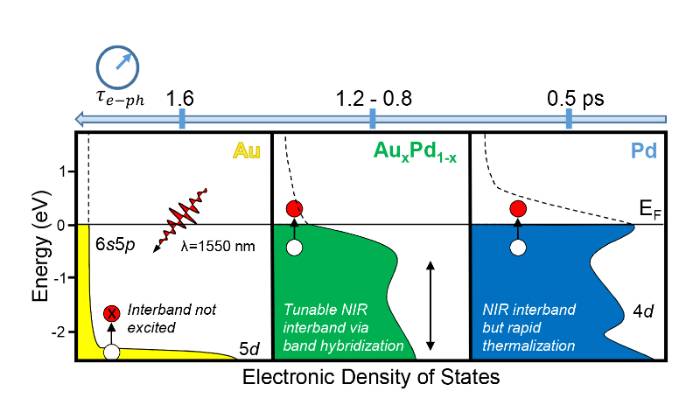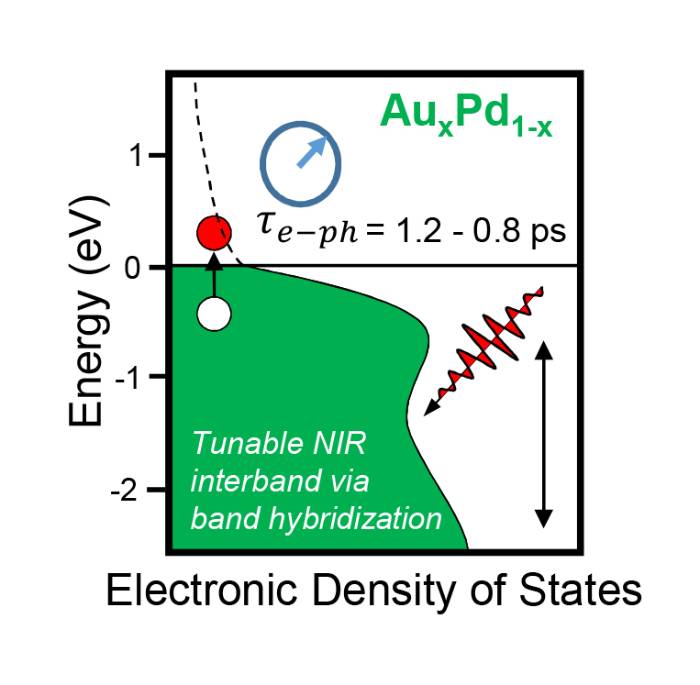LSU, Drexel Team Awarded Grant for Innovative Alloy Research
June 17, 2021
 BATON ROUGE, LA – For the first time, a team of researchers at LSU and Drexel University
is examining the structure-function relationship in transition metal alloys—such as
copper-titanium, gold-palladium, gold-titanium, etc.—and their ability to generate
and efficiently transport above-equilibrium “hot” electrons and holes in an optoelectronic
device.
BATON ROUGE, LA – For the first time, a team of researchers at LSU and Drexel University
is examining the structure-function relationship in transition metal alloys—such as
copper-titanium, gold-palladium, gold-titanium, etc.—and their ability to generate
and efficiently transport above-equilibrium “hot” electrons and holes in an optoelectronic
device.
The charges generated by current materials have very short lifetimes and decay into heat before they can be collected. The outcome of this project could change our understanding of the properties of these alloys and lead to more efficient photodetectors, which are used in telecommunications, security, and surveillance, especially in military applications.
It’s part of an LSU-led collaborative grant with Drexel funded by the National Science Foundation Division of Materials Research in the amount of $560,000. LSU Chemical Engineering Associate Professor Kevin McPeak leads the team as principal investigator and is joined by co-PIs William Shelton, LSU Chemical Engineering professor, and Phillip Sprunger, LSU Physics professor. They are working with Drexel Chemical and Biological Engineering Professor Jason Baxter.
“As an NSF [grant-funded project], our goal is to understand how alloying effects the lifetime and abundance of these hot carriers,” McPeak said. “This fundamental knowledge should then enable us to develop higher performance photodetectors. But the fundamental understanding of the alloy properties is our primary goal. No one has explored these alloys for hot carrier applications in the past.
 As part of the project, the team will be utilizing a special piece of equipment called
a near-field optical microscope, which was made possible by an NSF Major Research
Instrumentation grant last year. It is one of only three such instruments connected
to synchrotrons—large machines that accelerate electrons to the speed of light—in
the United States. It also has spectroscopy modes that others do not, making it unique
worldwide.
As part of the project, the team will be utilizing a special piece of equipment called
a near-field optical microscope, which was made possible by an NSF Major Research
Instrumentation grant last year. It is one of only three such instruments connected
to synchrotrons—large machines that accelerate electrons to the speed of light—in
the United States. It also has spectroscopy modes that others do not, making it unique
worldwide.
“The microscope will allow us to map the hot carrier lifetimes of these alloy films,” McPeak said. “This has never been done before. People measure the ensemble average lifetime, but the microscope will allow us to determine how local variations in the films, e.g., grain boundaries, defects will affect the hot carrier lifetime.”
Some additional aspects of the project are that the team will engage graduate and undergraduate students to perform this research in its laboratories; partner with local Baton Rouge high schools to allow up to five annual summer in-lab residency programs for their junior and senior science students; and engage approximately 100 middle-school students per year in the Philadelphia area in building, testing, and racing shoebox-sized solar-powered cars.
Like us on Facebook (@lsuengineering) or follow us on Twitter and Instagram (@lsuengineering).
###
Contact: Joshua Duplechain
Director of Communications
225-578-5706 (o)